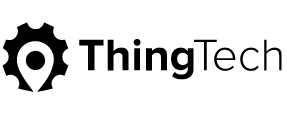Digitizing Fleet Management in the Government Sector Through Smarter Connectivity
This summary is based on a comprehensive industry study of fleet managers conducted by Blumberg Advisory Group.
More than 3,000 federal, state, and local government fleet managers were surveyed in the second quarter of 2021. This large-scale research was conducted with two objectives in mind:
- To benchmark current and planned fleet management practices.
- To quantify the impact of telematics, connectivity and the IoT on operational performance.
Measurable benefits of connectivity to fleet operations, as affirmed by the study, include but are not limited to:
- Reduction in asset breakdowns and repairs
- Reduction in asset wear and tear
- Elimination of unplanned maintenance
- Improvement in fleet utilization
- Extension of vehicle life
This groundbreaking study highlights the vital role connectivity plays in digitizing fleet operations. The improvements in fleet performance that telematics enables helps governments meet the needs of the citizens they serve, and enables them to achieve the important initiatives that make their communities better places to live.
Thurs., June 24, 11am to 11:45am ET
Join study leader Michael Blumberg of Blumberg Advisory, a leading research and consulting firm in the field service industry and pioneer. Michael joins Jim Lester, CEO of ThingTech, the study’s sponsor, to share survey findings and analysis.
Webinar attendees can download the 25+ page report FREE following the session.
Key takeaways from Digitizing Fleet Management in the Government Sector Through Smarter Connectivity
A comprehensive industry study of fleet managers
Published June 2021
Connectivity enables fleets to respond to service issues in a timely way
A majority (85%) of respondents use a Fleet Management System (FMS), and almost three-quarters connect assets to telematics. As a result, only a small percentage experience situations impacting service due to equipment downtime.
Major repairs are avoided thanks to real-time data feeds and automation of critical tasks
Telematics dramatically improves fleet performance. In addition to fast service response, connectivity and automation of critical task lets them anticipate and avoid major/emergency repairs that lead to downtime and higher costs.
Unplanned maintenance is virtually eliminated
More than half (53%) of respondents indicate their fleets have the telematics needed to access engine diagnostics in real time, and most (83%) have reduced repairs and breakdowns as a result. Findings suggest those who don’t have the capability underestimate its potential.
Large and small fleets alike benefit from telematics
Survey results indicate fleets with 1000+ assets are 35% more likely to be equipped with telematics to access engine diagnostics than smaller fleets. However, data shows that no matter the fleet size, benefits are the same.
Mimimize wear, maximize vehicle life
Tracking engine hours and driver behavior is yet another use case for telematics. Slightly more than half of respondents use IoT solutions to provide a real-time assessment of their vehicles’ health. Two-thirds (65%) have reduced wear and tear as a result.
Electric Vehicle Mandates drive telematics adoption
More than one-third of respondents’ organizations have EVM policies in place to achieve zero carbon emissions. New hybrid and electric vehicles that include embedded telematics are replacing older combustion vehicles.
Join us for more data, insights and understanding about how telematics impact government fleets in positive ways
Thursday, June 24, 11am to 11:45am ET

